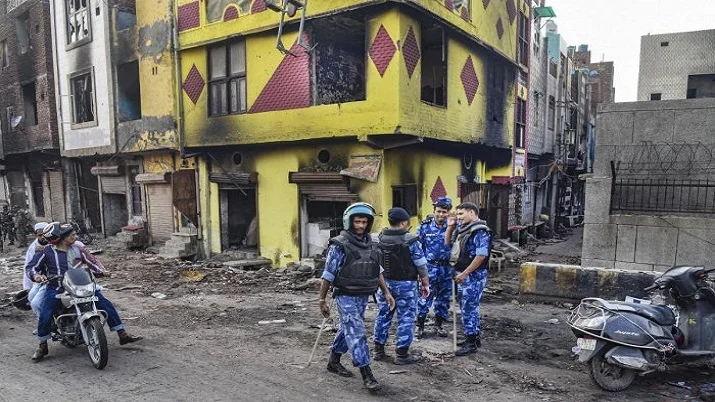
NEW DELHI – A week after the communal violence in northeast Delhi, the residents are slowly picking up the pieces as the government’s relief and rehabilitation measures have kicked in amid tight vigil by security forces.
The police have been conducting flag marches and holding meetings with the locals in Jafrabad, Maujpur, Babarpur, Chand Bagh, Shiv Vihar, Bhajanpura, Yamuna Vihar and Mustafabad where the violence, that sparked from protests over the amended Citizenship Act, was the most intense.
In Mustafabad, an Eidgah has been turned into a relief camp, and the locals too have also opened their homes for those seeking shelter. Many families have been sought refuge at the relief camps in Mustafabad and Shri Ram Colony, with others preferring their relative’s house.
Students are appearing board exams that were postponed in riot-affected areas with the police and paramilitary personnel maintaining a tight vigil outside the centres. However, government schools in the area will remain closed till March 7.
Some people are visiting their burnt out homes to assess the damage. Many of those who fled during the violence are still fearful about returning and say that they would wait for a week more before deciding anything.
The Delhi Police has registered 436 FIRs and arrested or detained 1,427 people in connection with the communal violence that claimed 42 lives and left over 200 injured. an officer had said on Tuesday, adding 45 cases were registered under the Arms Act.
The situation in the riot-affected areas was under control and the police control room (PCR) have not received calls regarding rioting in the past six days, the force said.
On Tuesday, Mohammed Shahrukh, who was seen confronting an unarmed police personnel during violence at Maujpur last week, was arrested from Uttar Pradesh’s Shamli district, police said.
Follow this link to join our WhatsApp group: Join Now
Be Part of Quality Journalism |
Quality journalism takes a lot of time, money and hard work to produce and despite all the hardships we still do it. Our reporters and editors are working overtime in Kashmir and beyond to cover what you care about, break big stories, and expose injustices that can change lives. Today more people are reading Kashmir Observer than ever, but only a handful are paying while advertising revenues are falling fast. |
| ACT NOW |
| MONTHLY | Rs 100 | |
| YEARLY | Rs 1000 | |
| LIFETIME | Rs 10000 | |







